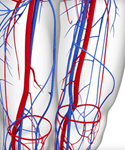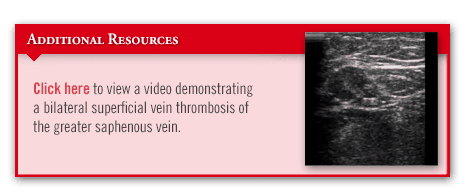Policy makers and regulators have placed a great emphasis on venous thromboembolism (VTE) prevention due to its significant healthcare burden. Hospital VTE measures are now part of CMS’s pay-for-performance and Joint Commission regulatory programs. Despite the existence of effective preventive treatments for VTE, prophylaxis rates among medical patients have been reportedly low. Few studies have looked at the effectiveness of these
interventions in electronic health record (EHR) environments. As more hospitals implement EHR systems, it is critical to define the strengths and limitations of such decision support tools to optimize patient safety.
Assessing Computerized Decision Support
My colleagues and I had a study published in the Journal of Hospital Medicine that evaluated the safety and effectiveness of a computerized decision support application. Our VTE decision support module was comprised of order sets with the following features:
• Patients were identified as being on the medicine service based on admitting service designation.
• An order set offered pharmacologic VTE prophylaxis options or alternate options to document the lack of clinical indications for pharmacologic VTE prophylaxis, planned therapeutic anticoagulation, or contraindications to VTE prophylaxis.
• Alternate order sets were offered with mechanical VTE prophylaxis options if physicians indicated that pharmacologic VTE prophylaxis was contraindicated or if the information system identified a contraindication.
• If pharmacologic VTE prophylaxis was not prescribed, these rules were repeated every 5 days.
The decision support intervention was put into place on medicine services, and its effectiveness and safety were assessed in comparison with non-medicine comparison services (in which the intervention was not deployed). Following intervention, there was a significant increase in the rate of overall and pharmacologic VTE prophylaxis on medicine services. Overall VTE prophylaxis increased from 62% to 82%, and pharmacologic VTE prophylaxis increased from 59% to 75%. Smaller increases were seen on non-medicine services. In addition, the incidence of hospital-acquired VTE dropped significantly on medicine services and did not change significantly on comparison services. Bleeding rates increased on medicine and on non-medicine comparison services, and there were non-significant changes in thrombocytopenia rates observed on both services. Bleeding episodes were found to be minor; no case required more than 2 units of packed red blood cells.
Important Implications
The overall adoption of EHRs and computerized decision support systems in hospitals is low, but efforts are being made to financially incentivize hospitals to adopt such technology. The relatively simple intervention tested in our study can help hospitals optimize care by increasing rates of overall and pharmacologic VTE prophylaxis while decreasing the incidence of hospital-acquired VTE. It may also prove to be generalizable across various vendor systems and can be readily modified as evidence-based guidelines evolve. Such interventions are important as efforts to reduce harm in the inpatient setting are continuing to intensify, and greater adoption of various pay-for-performance programs is being encouraged.




 admin
admin